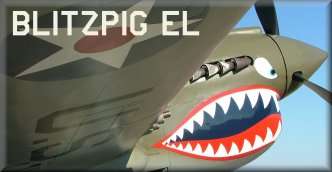
 |
|
#171
|
|||
|
|||
|
Hey 1984, what's a "gargot"?
|
|
#172
|
|||
|
|||
|
|
|
#173
|
|||
|
|||
|
I thought that it translated as "fillet" (i.e., thin strip of material just ahead of the tailplane used to improve stability for bubble canopy planes), like was added to the P-51D-20.
When I think of a "razorback" aircraft I think of a plane like the P-47C or P-47D-10 which had a "greenhouse" (or "lantern") canopy and a very narrow rear fuselage. Arguably, the P-40 had a similar appearance. |
|
#174
|
|||
|
|||
|
Quote:
:p Last edited by Mustang; 01-24-2013 at 10:40 PM. |
|
#175
|
|||
|
|||
|
Quote:
correctly - "gargRot" - as far i know, it's fairing of fuselage mainly for better aerodynamics ie teardrop-shaped form and, apparently, instead "without gargrot" more correctly be "пониженнный гаргрот"/"low gargrot" because fairing just may have another form... and gargrot it's NOT power element of construction or, apparently, fairing of canopy... so, for example, if for yaks correctly "without gargrot" or "low gargrot" and bubble canopy, for la-5 apparently more correctly bubble canopy and another form of fuselage, etc... |
|
#176
|
|||
|
|||
|
Quote:
So, if I've got my Russian aircraft terminology right: No Gargrot = "razorback" or high rear fuselage faired into a "greenhouse" ("lantern") canopy. Gargrot = cut-down rear fuselage with "bubble" canopy set on top of the fuselage or partially faired into it. For example, Yak-7 = No Gargrot, but Yak-3 = Gargrot. Do you know what the word "gargrot" means literally? (For non-U.S. English speakers, the term "razorback" refers to a particularly nasty sort of feral pig found in the U.S. South - basically America's answer to the wild boar. The high rear fuselage of the P-47C is particularly reminiscent of this creature's back) |
|
#177
|
|||
|
|||
|
I understood it the opposite way: all LaGGs have gargrot, the La7 does not.
|
|
#178
|
|||
|
|||
|
Quote:
Yeah, early P-47's were called razorbacks ... because of the rather sharp edged spine behind the canopy. Bubble canopy equipped P-47's, therefore, weren't razorbacks, just jugs. Planes in general before bubble canopies were the norm so (in the west, anyway) there really wasn't so much a a need to distinguish them from the bubble canopied version as much as identifying the new bubble version itself as something new and different. Bubble canopies typically hurt directional stability a bit because of the turbulence (and, in the Mustang, additional canopy height) behind them but not much more, really, than going to a larger prop, let's say from a three blade propeller to a four blade, as when Mustang went from Allison to Merlin. The Mustang, having had both mods, drove work in improving directional stability although the Brits had started work on that issue earlier after testing their first (non bubble) four blade Merlin versions (some interesting test parts there). |
|
#179
|
||||
|
||||
|
The bubble top P51s were also slower than the "razorback" original design as well.
__________________
 Personally speaking, the P-40 could contend on an equal footing with all the types of Messerschmitts, almost to the end of 1943. ~Nikolay Gerasimovitch Golodnikov |
|
#180
|
|||||
|
|||||
|
Quote:
but, apparently, english "razorback" can mean lot of things without accounting for type design ie it's like i called - wrong, in fact, just for simplicity - all planes with bubble tops "without gagrot"... Quote:
yak-1 - Quote:
Quote:
Quote:
and, in total, of course it's all only my opinion, how i understood all these things... |
 |
|
|